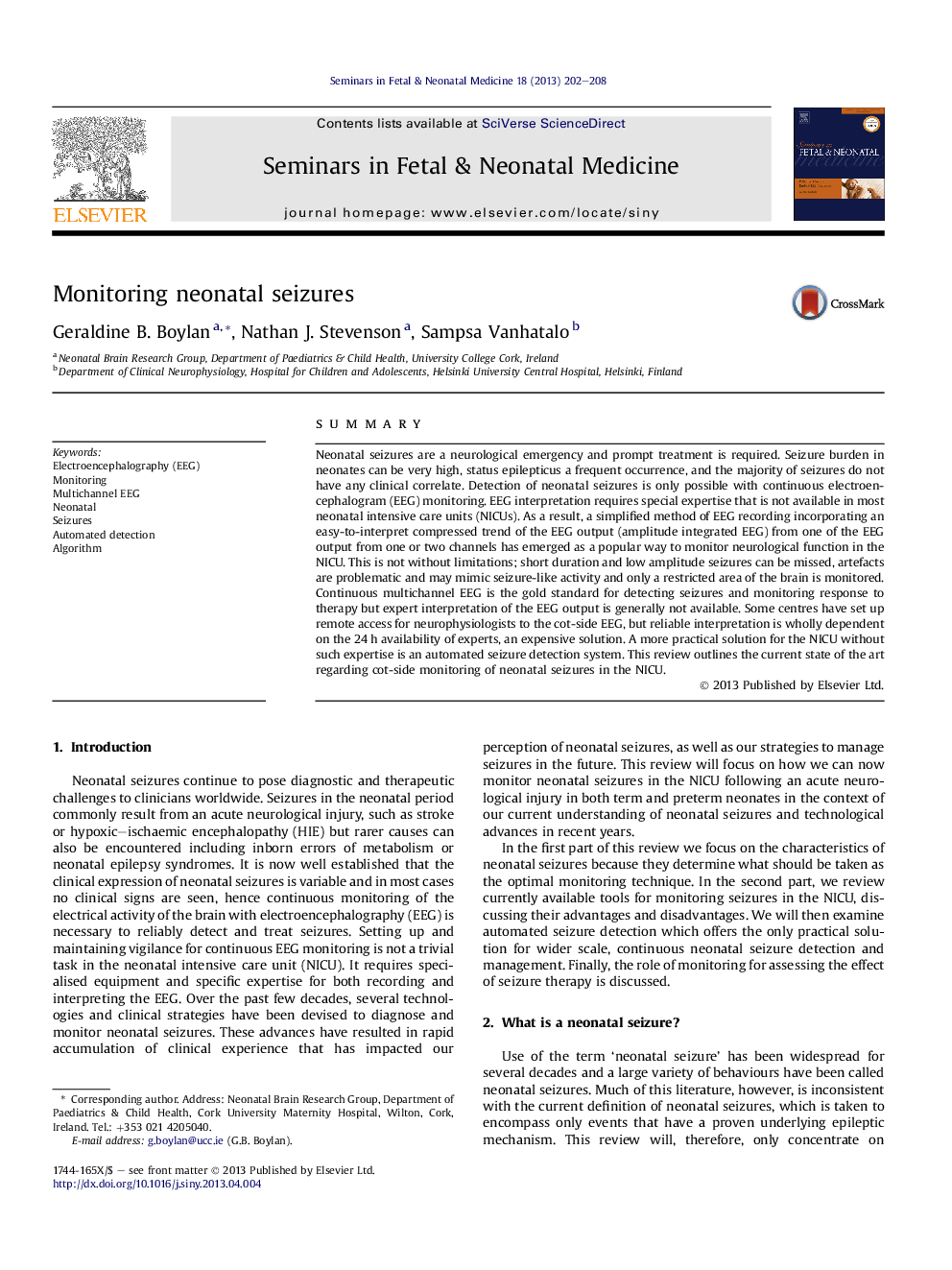| Article ID | Journal | Published Year | Pages | File Type |
|---|---|---|---|---|
| 3974166 | Seminars in Fetal and Neonatal Medicine | 2013 | 7 Pages |
SummaryNeonatal seizures are a neurological emergency and prompt treatment is required. Seizure burden in neonates can be very high, status epilepticus a frequent occurrence, and the majority of seizures do not have any clinical correlate. Detection of neonatal seizures is only possible with continuous electroencephalogram (EEG) monitoring. EEG interpretation requires special expertise that is not available in most neonatal intensive care units (NICUs). As a result, a simplified method of EEG recording incorporating an easy-to-interpret compressed trend of the EEG output (amplitude integrated EEG) from one of the EEG output from one or two channels has emerged as a popular way to monitor neurological function in the NICU. This is not without limitations; short duration and low amplitude seizures can be missed, artefacts are problematic and may mimic seizure-like activity and only a restricted area of the brain is monitored. Continuous multichannel EEG is the gold standard for detecting seizures and monitoring response to therapy but expert interpretation of the EEG output is generally not available. Some centres have set up remote access for neurophysiologists to the cot-side EEG, but reliable interpretation is wholly dependent on the 24 h availability of experts, an expensive solution. A more practical solution for the NICU without such expertise is an automated seizure detection system. This review outlines the current state of the art regarding cot-side monitoring of neonatal seizures in the NICU.
